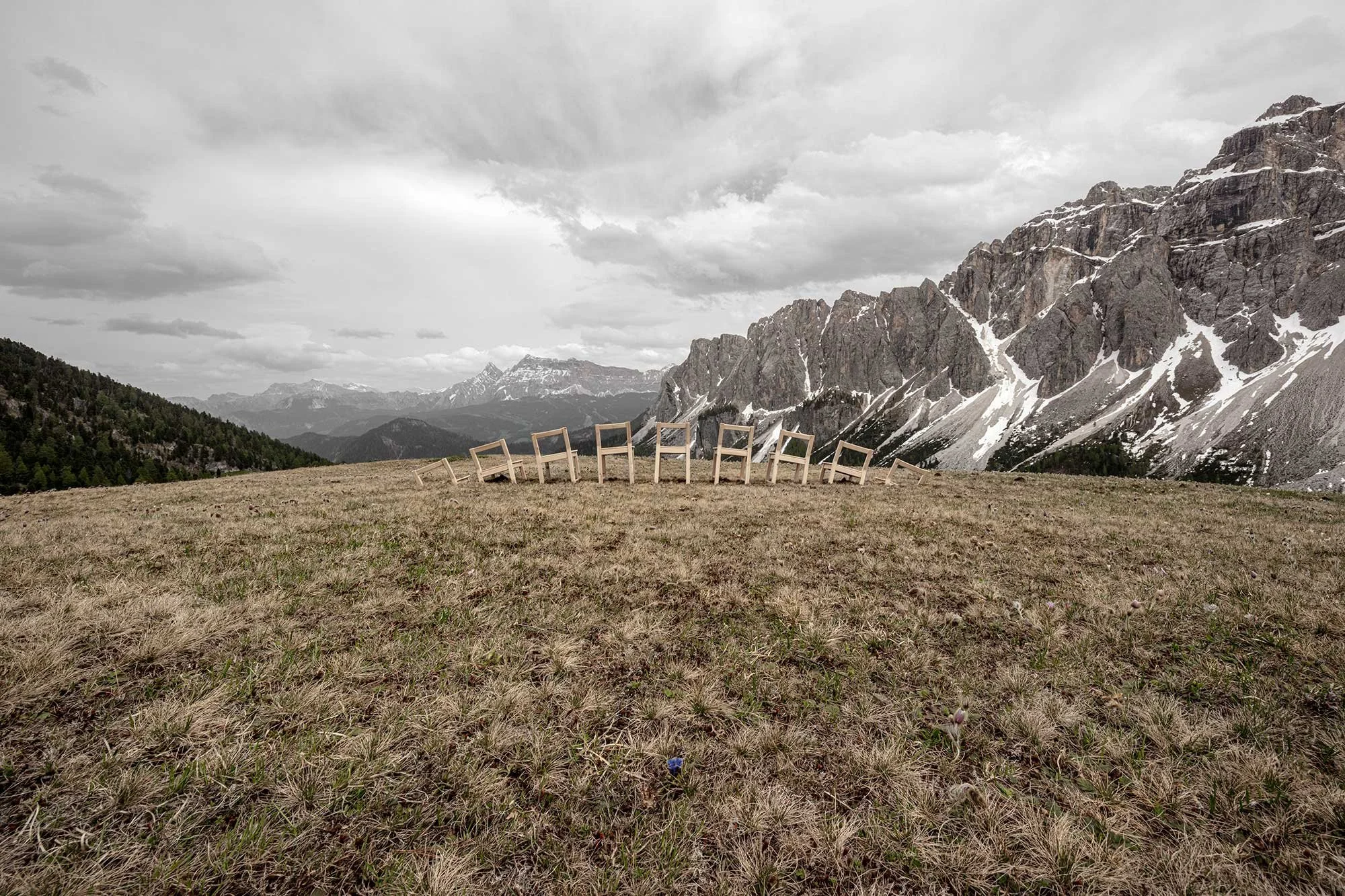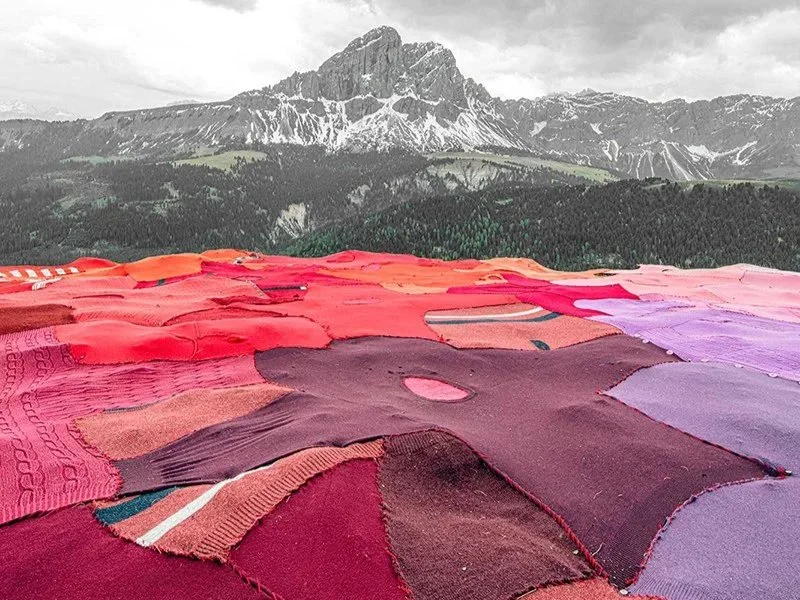Junín
Anuar Portugal
An interactive installation - nine suitably truncated chairs are arranged in such a way that the seats form an arch. The spectator can choose which chair to sit on and the reception will vary according to the location of the work: on the slope of a hill, for example, the most stable and straight chair will be one of those cut off upstream and not the obvious central choice positioned on the flat.
The chairs converge several elements that allude to a delimiting and exclusive concept of Heimat - they are partially embedded in the ground and thus evoke the roots that bind each of us to our origins; moreover, the chair is also the linguistic root of sedentariness, which is the basis of a precise and restrictive feeling of belonging. Sitting down to rest on one of these chairs will catalyse sensations that will perhaps tend to be nostalgic, evoking traditional type memories - the return to one‘s roots is in fact also suggested by the title of the work, homonymous with a poem by Borges that speaks of the return to the city of his grandfather.




Exhibit place Munt d’Adagn
Every three years, men from Val Badia's twelve villages walk in procession to the old Jeunn bishop's see, which is now a monastery, located above the small town of Chiusa, in Val di Isarch. The pilgrimage is a tradition going back over the centuries and leads the faithful from Val Badia on a three-day hike that crosses the valleys and mountain ridges. Some pilgrims arrive in the neighbouring valley, Funes, crossing the "Ju de Furćia" (the "cross" mountain ridge, also known as S. Zenon pass) at 2,293 m thorough the path of the Munt d’Adagn, which is a beautiful panoramic spot with green meadows in summer and white snow in winter.











